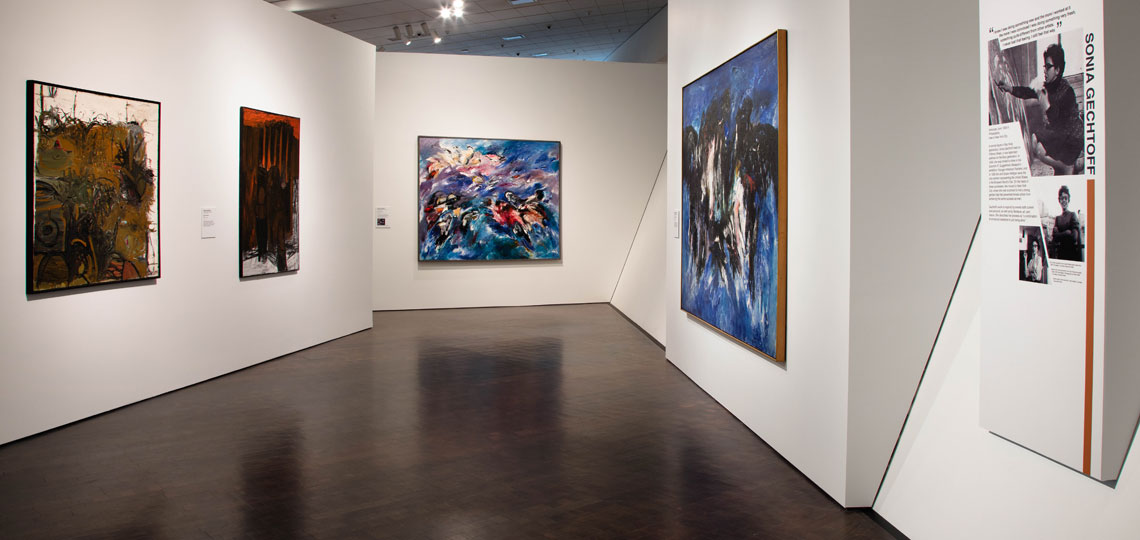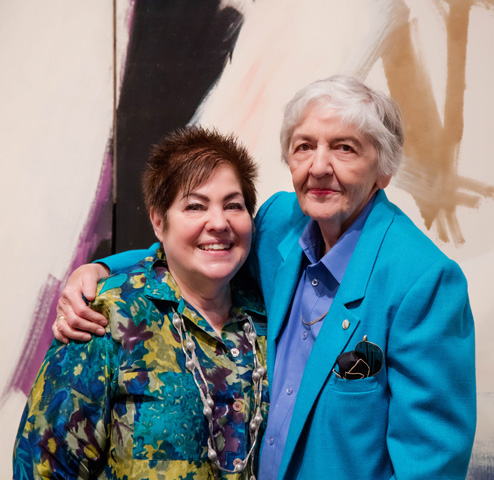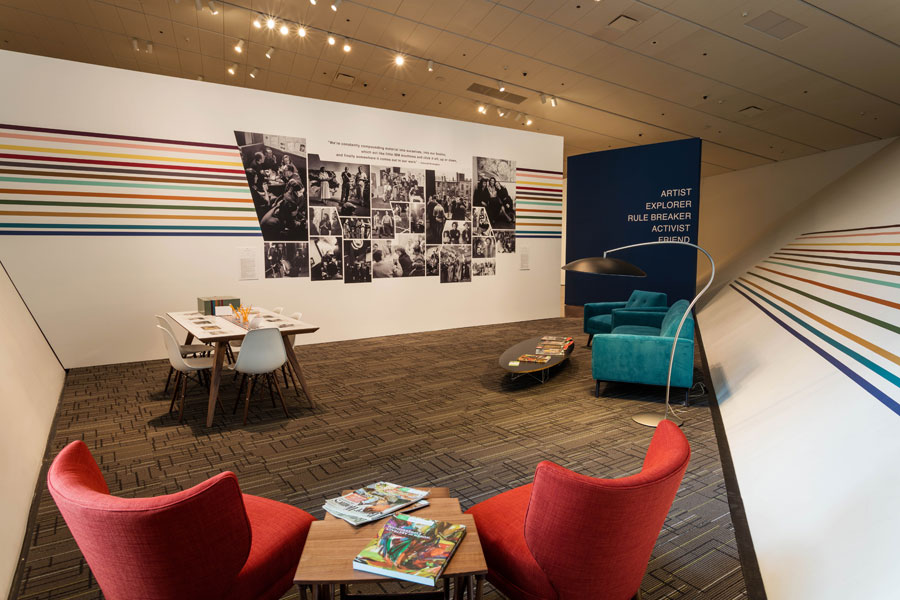Women of Abstract Expressionism (at the Denver Art Museum through September 25) highlights the work of 12 women who participated in the development of not only the first American-grown modern art movement, but the movement always characterized as male-dominated…as macho. It’s a movement that has been all about the heroic “paint-spattered man.”
However, women helped forge this new American movement, actively participating alongside men in the studios, clubs, and exhibitions. Our exhibition focuses mainly on paintings by women abstract expressionists from the 1940s–1950s. It’s important we show that they were full participants in the early years of the movement—not just followers, as some would tell it.
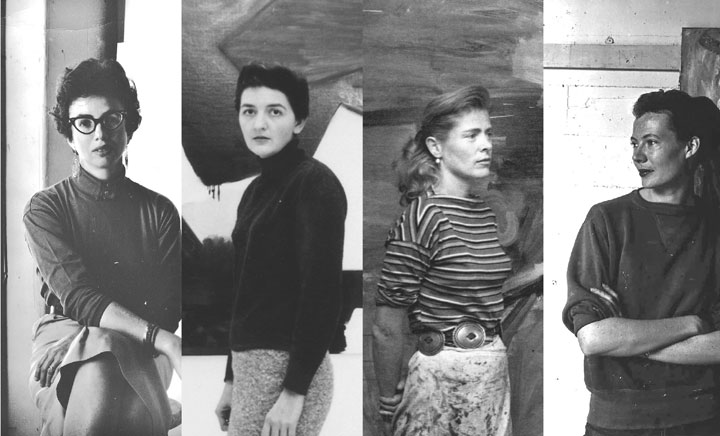
(left to right) Sonia Gechtoff, 1957. Courtesy of Sonia Gechtoff. Judith Godwin, Betty Parsons Gallery, New York, 1959. Courtesy Judith Godwin. Mary Abbott in studio about 1949–50. Courtesy McCormick Gallery, Chicago. Deborah Remington, 1955. Courtesy Deborah Remington Charitable Trust for the Visual Arts.
Why Focus on Women?
In fact, I didn’t start out to do a woman’s show, but rather to see who had been left out of the canon. It became clear that this entire gender had been in the shadows of the men of abstract expressionism. Two questions that I’m often asked are: What is the most surprising thing you found in your work? and Why have the women been left out of the histories? The first is easy: The most surprising thing to me is that this exhibition had not already been done! It is a long time coming and we are delighted to organize it here at the Denver Art Museum.
And—why aren’t these artists better known? We need to remember that these artists came of age in a very different time than we are in today.
Yes, there was gender discrimination in the art world. Of course, women didn’t have the position in society in general. Can you imagine a woman running for president in the 1950s? Beyond this, it's good to remember that art historians have also discriminated: The standard History of Art by Horst Janson, the tome used in university art history surveys for so many years, didn't include female artists until the mid-1980s.
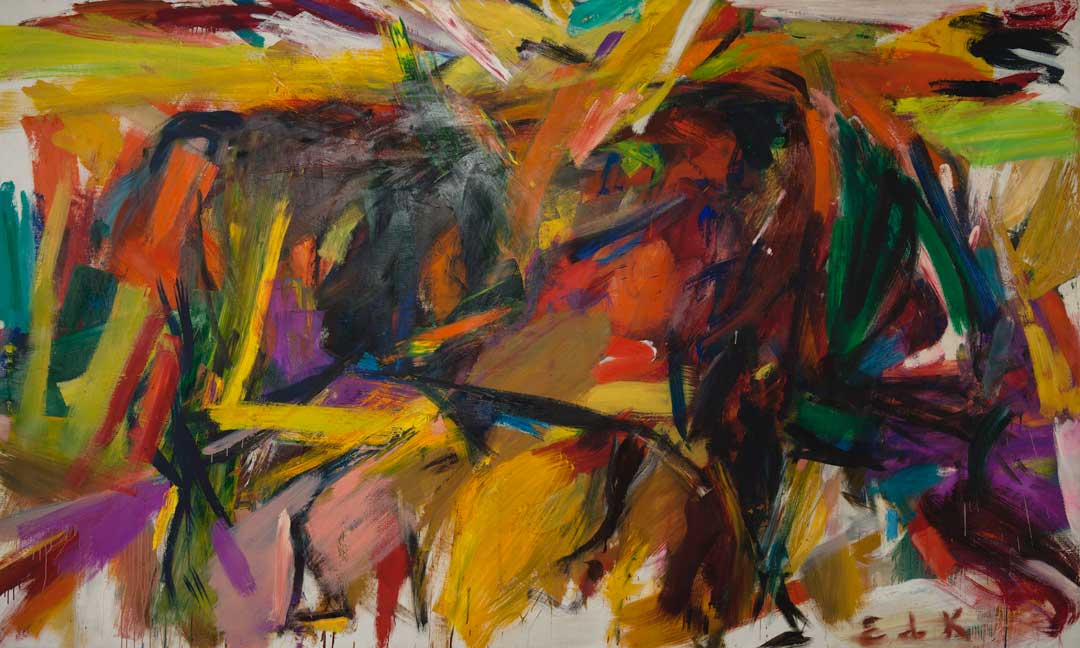
Elaine de Kooning, Bullfight, 1959. Oil on canvas; 77-5/8 x 131-1/4 x 1-1/8 in. Denver Art Museum: Vance H. Kirkland Acquisition Fund. © Elaine de Kooning Trust
Experimentation
Canvases by women painters show experimentation with process and materials, and the expressive freedom of direct gesture, at the heart of abstract expressionism—which often includes a new sense of large scale, all-over treatment, and surface emphasis, rather than depth.
Personal Experience, Nature, Myth & Other Themes
In taking a fresh look at the works here, we’ve discovered additional qualities not typically associated with the movement. While individual expression is key, several themes recur in the works of these women painters. These include responses to place, to nature, the seasons, to time of day, and meaningful personal events.
Literature, mythology, poetry, music, and dance all sparked imagination. The paintings are quite abstract, even when referencing something real. In many cases, these artists let us in on those references by their titles. At one point, Helen Frankenthaler was asked: Why do you title your paintings? She said, “Because a title has to have a meaning.”
When I consider the paintings in our exhibition, there are only a very few that are called Untitled. I think that says something about the women abstract expressionists, and those special thematic ties that broaden our understanding of abstract expressionism as a whole.
Most of us understand there is no one style for abstract expressionist paintings. There isn’t a formula for them, as there could be for making a cubist painting. These are individual responses to personal experience. I hope visitors will see these painters as 12 individuals.
Exhibition Catalog
After surveying more than 100 artists active in the 1940s and '50s, it was a great challenge to limit the exhibition to 12 who stand in for the many. In organizing the exhibition it was important that each artist have her own space within the gallery. I thank our exhibition team for making that a reality.
I’m especially glad our exhibition catalog, edited by Joan Marter and published by Yale, will now be the permanent record of more than 40 artists, the most comprehensive resource available.
Exhibition Video
I hope everyone will see the 15-minute, DAM-produced video made especially for this exhibition. It’s in our Fuse Box gallery.
One of the great pleasures for me as a curator has been getting to know the three artists who are still with us today—Judith Godwin, Sonia Gechtoff, and Mary Abbott, and also some of their children, who have shared memories of their artist-mothers. I hope our video will help visitors understand these individuals as real individuals.
The Lounge
Please don’t miss the lounge, an area of the exhibition where you have a chance to reflect on these artists and the 1950s, listen to music of the era (jazz was a big influence on many of the artists), and share a time when you've been an artist, explorer, rule breaker, activist, or friend.
